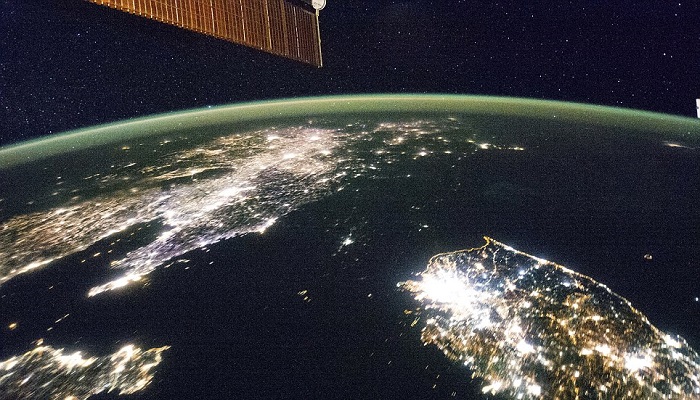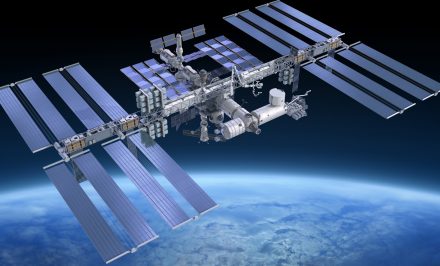The United States put men on the moon, Russia managed to put the first animal and first man in space, and even China’s working on its own space station. But alongside these 3 space superpowers, there are many other countries with space programs. Some aren’t as glamourous though, like these…
Luxembourg
The 15th smallest country in the world, the Grand Duchy of Luxembourg has a relatively large space program. Relatively, if you compare it to the roughly half million inhabitants of the country that’s landlocked between France, Germany and Belgium.
The country launched its own satellite in 2011, the VesselSat-1, and its successor VesselSat-2became a member of the European Space Agency in 2004. Instead, VesselSat-1 was launched aboard an Indian PSLV-rocket from Satish Dhawan Space Centre. The second satellite was launched aboard a Chinese Long March 4B-rocket, from Taiyuan.
Luxembourg also plays host to the ‘Société Européenne des Satellites’ (or SES), the first European satellite operator. Besides that, there’s a small but thriving space industry in the country, which is coordinated by the Luxembourg’s Space Cluster to promote economic diversity.
Mongolia
The Mongolians might’ve conquered the entire Eastern world, these days Mongolia is a country with such vast emptiness that it’s currently the sparsest populated country on Earth. The country has a population density of 1 per 1,000 square kilometers, and most of these inhabitans live in the capital of Ulan Bator.
But that hasn’t withheld Mongolia from setting up its own space program.
The country has a scientific institute, named the National Remote Sensing Center, a subdivision of the Mongolian meteorological organisation. The ‘space agency’ among other things uses foreign satellite data to monitor the Mongolian landscape, and using that data to study Earth sciences.
It’s a surprisingly relevant field in Mongolia, which otherwise has much trouble mapping it’s vast areas of landmass.
The satellites Mongolia utilizes are foreign, mostly NASA-satellites such as MODIS. The country once had the ambition to launch its own satellite, called MongolSat, but despite the plans to launch in 2013 no satellite was ever built.
However, for such a small space program Mongolia did send a citizen into space. The astronaut with the unpronouncable name of Jügderdemidiin Gürragchaa flew to the Soviet Salyut 6-station on the Soyuz 39-mission. This was in 1981, and Gürragchaa was in space for 7 days and 20 hours. Gürragchaa was the first and so far only Mongolian into space, and at the time only the second Asian the leave Earth’s atmosphere.
Uganda
Uganda is one of the poorest countries on the planet, but despite a GDP of only 26 billion dollars the country’s then-president Idi Amin once launched a rather ambitious space program.
In 1971, at the height of the Apollo program, the newly installed dictator Idi Amin had big plans, none of which were even remotely close to being serious. The plans consisted of sending man to the moon and even to Mars in a matter of a few years
Uganda’s ambitious program actually did get a little further than just the blueprints, but don’t imagine too much of that. In fact, the only thing that physically materialized from Amin’s crazy ideas were a tire track in the woods, to be used for astronaut training.
Despite the idiotic brain waves of a ludicrous dictator, Uganda at times attempts to set up new space initiatives. In 1996, several courses in space science were introduced to the University of Mbara, and Uganda is a member of the United Nations Office for Outer Space Affairs and occasionally gets invited into think tanks, mostly to do with Earth observation programs. More importantly, Uganda is one of the most vocal proponents of a global space law.
The country has often tried to its geographical advantage of being so close to the equator, but a real spaceport has never been established. Political turmoil has never made a spaceport a priority, despite it being one of the most ideal locations for leasing it out to other nations.
There are several private space initiatives in Uganda, most notably the program ran by aerospace engineer Chris Nsamba who’s attempting to make his own spacecraft with the help of some 600 volunteers. Nsamba plans to launch this construction around 2017, however, a government study in 2011 concluded commercial space activities were illegal in Uganda.
Lithuania
As a former Soviet state, Lithuania inherited some of the motherland’s ambitious space activities. During the Soviet Union era, Lithuania was the home of Energia which was the main producer of parts for the Buran-shuttle program. This is still noticable in industries in the country which to this day produce materials for Russian rockets and European satellites.
Lithuania joined ESA in 2010, and although the country’s contribution is small it’s a valued partner within the space agency.
The country even managed to launch 2 small satellites, Lituanica Sat-1 and LitSat-1. Both cube-sats were launched from the ISS in 2014.
The country is currently in the process of building a second satellite, Lituanica Sat-2?. The planned launch is set for 2016.
North Korea
The small stalinist country may have a bit of a Calimero-complex, but North Korea’s space program is not to be underestimated. It’s true that the country claims outrageous exaggerations about its ability to launch ballistic and even orbital missiles, and yes, the Party’s propaganda claims even more ridiculous feats such as landing a man on the sun.
But North Korea is at least half serious at work on its space program. The country first tried launching a satellite in 1998, and again in 2006, 2009 and 2012. No launches were succesful, until in 2012 the country claimed to have successfully put a satellite named Kwangmyŏngsŏng-3 Unit 2 into orbit. This was later confirmed by South Korean officials.
North Korea hasn’t had much luck in the way of support, because may other countries like South Korea and the United States condemn the country’s spacefaring ambitions. The United Nations blacklisted North Korea from developing ballistic missile capability, but the country has never really cared much for such trivialities.
It’ll be a long time before North Korea will get a man into space, let alone land on on Saturn.







